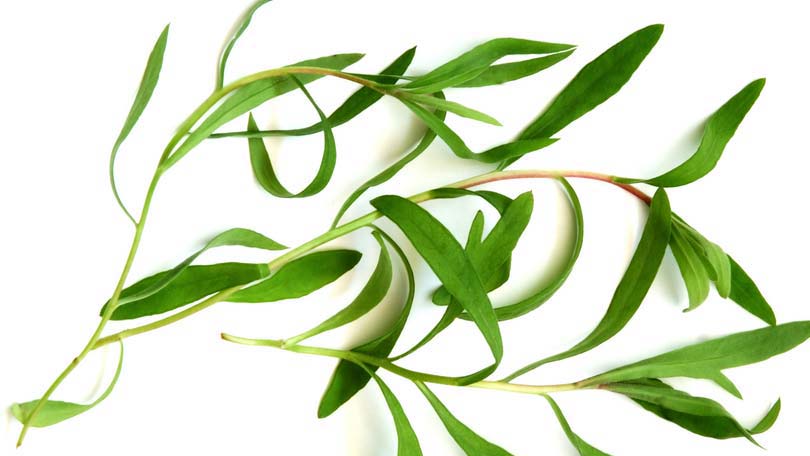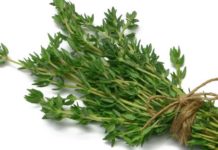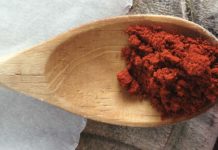
Tarragon, or Artemisia dracunculus, is a perennial herb in the lettuce family and is related to wormwood. Native to northern Europe, Siberia, Russia, and parts of Asia, tarragon went from relative obscurity in the cooking world to the forefront of French cuisine in just a few hundred years – a remarkable accomplishment considering its competition.
Characteristics
Tarragon is a small, attractive herb with slim vertical stems and long, narrow dark leaves which are green in color. The herb is native almost exclusively to the Northern hemisphere, and has spread from its cultivation in Europe and Scandinavia to parts of North America as well. The plant prefers dry, poor soil which typically is unfriendly to delicate herbs – excess moisture in the soil can actually lead to frostbite and death in colder climates, so dry soil protects the plant.
There are two varieties worth mentioning in reference to the kitchen – French tarragon and Russian (or Siberian) tarragon. The French is held in higher esteem because of its milder flavors and glossy appearance (the herb has smooth, deep green leaves). Russian tarragon is a suitable substitute in most cases, but is said to have an “inferior” flavor by comparison; this variety can be identified by its rough leaves and light green color.
Tarragon is similar in flavor to anise, with sweet and heady notes and a fragrant aroma.
Common Uses
The herb is, compared to kitchen plants which have been used for thousands of years, relatively new to many world cuisines. It has found a semi-reliable place in Mediterranean, European, and North American cookery. However, tarragon is most commonly associated with French cuisine due to its placement in an herb blend referred to as the “fine herbes” (fresh parsley, chives, chervil, and tarragon); it is also used in well known sauces such as Bearnaise and in dishes like tartare. Tarragon pairs well, when used correctly, with fish, lobster, red meats, chicken, some roasted vegetables, fresh salads, and tomatoes; dressing, marinades, soups, and vinegars can also be enhanced with a bit of tarragon. It also goes nicely with eggs – the traditional French herb omelet demonstrates this nicely.
Tarragon contains a numbing compound, eugenol, which makes it a good natural remedy for minor pain-related symptoms such as toothache or sore gums (the Greeks used the herb this way). It was also classified for a time under an archaic school of medicine which claimed that certain herbs could cure ailments inflicted by animals or offenders similar to the plant; tarragon, with it’s long, narrow leaves, was assumed to treat snake bites and wounds from venomous animals because it looked like fangs…there isn’t much information on how successful the treatment was, perhaps because the practitioners of this school of medicine didn’t live very long…
Use and Storage
Tarragon loses its flavor with unfortunate speed when dried – preserving in herb in vinegar is a good option for those wanting to use its essence for cooking when the leaves are unavailable. Tarragon can be stored for a short time in the fridge, but is sensitive to cold and can deteriorate quickly. Dried tarragon is less potent but can be purchased in many fine grocery stores and supermarkets.
It is best to use tarragon with a light hand – the herb can easily overpower all other elements in a dish.
Use It (How to/where)
- along with chives, parsley, and chervil to season French dishes
- in egg dishes and delicate omelets
- infused into vinegar to season many dishes
- in salad dressings and marinades
- to season fish, lobster, and seafood
- paired with chicken and young fowl
- with red meats and some roasts
- in soups and stews
- in sauces like Béarnaise
Recipe using Tarragon
Tarragon Marinade
1/3 cup olive oil
¼ cup dry white wine
Juice of 3 fresh lemons
¼ cup chopped fresh tarragon
¼ cup chopped fresh chives
2 cloves garlic, minced
2 tablespoons minced shallot
Salt and pepper to taste
Combine all contents in a bowl. Mix together. Pour over chicken breasts or other meat and let sit for 6-8 hours. Grill or roast chicken until tender. Serve with fresh spinach salad garnished with chopped tarragon leaves.




